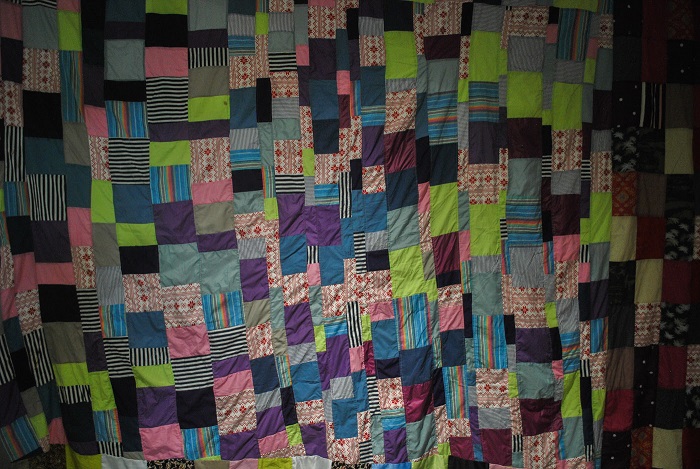Aditya Novali, “IDENTIFYING SOUTHEAST ASIA: Borderless Humanity” (2017).
Conversely, Aditya Novali’s “IDENTIFYING SOUTHEAST ASIA: Borderless Humanity” (2017) seeks to question the function and operation of borders, and issues of acculturation, but the work loses nuance along the way. Novali’s elegant new media map makes a game of Southeast Asian borders. Here, one can tactlessly flip on and off nations, creating new maps and borderlines on an individual whim. While the work recalls such monumentally violent decisions by colonialists, it is far too haphazard in design to be effective. The work pales in effect and affect in contrast to Indonesian artist Tintin Wulia’s deeply unsettling work on borders, for instance, “Untold Movements” (2015).
Walking through the galleries, you notice four monitors placed next to the two main stairwells. You catch an occasional glimpse of a person sprinting past the frame; the sound of his running feet echo through the hushed museum. The sound triggers questions: is he running fromor toward something? Where is he running to? The runner is a Myanmar migrant worker living in Thailand, and the work is “Signal” (2016–ongoing) by Thai artist Nipan Oranniwesna. Perhaps much like the entire show itself, “Signal” is a haunting but ultimately fleeting examination of diaspora.
Sawangwongse Yawnghwe, “Spirit Vitrines (Memoirs of a Shan Exile)” (2016-2017).
The stakes communicated through the work on view in this exhibition are high and stretch way beyond being simply interesting aesthetic experiments. This is arguably best embodied in Sawangwongse Yawnghwe’s work, especially his complex and layered installation, “Spirit Vitrines (Memoirs of a Shan Exile)” (2016–2017), which is a long vitrine housing figurines in a procession. These protective amulets are made to be carried during perilous journeys; whether by refugees in flight or great migrations.
Yawnghwe’s heavily researched work adopts a kind of magical realism, using tactics somewhere between art and archive to document the ongoing ethnic atrocities in Myanmar. Their arrangement mirrors an exodus, and resonates all too closely with images from around the world, particularly the Rohingya. Displayed as though conceived for an anthropological exhibition, and exhibited together with excerpts from Yawnghwe’s father’s book, The Shan of Burma: Memoirs of a Shan Exile, “Spirit Vitrines (Memoirs of a Shan Exile)” calls into question the function, the life, and the value of art to the endangered lives of refugees. Walking through the rest of exhibition, I couldn’t help but feel that art, at least in this white cube context, had very little to offer such people, but perhaps this is okay. Overall, this show brings into focus the monster lurking deep within ourselves.
Detail shot of Sawangwongse Yawnghwe, “Spirit Vitrines (Memoirs of a Shan Exile)” (2016-2017).
DIASPORA: Exit, Exile, Exodus of Southeast Asia continues at MAIIAM in Chiang Mai, Thailand until October 1







